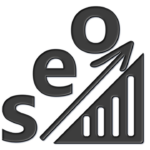If you desire rapid outcomes, it is often beneficial to commence with executing modifications to on-page Search Engine Optimization (SEO). Optimizing webpages on a website to improve customer satisfaction as well as providing Google with a better comprehension of the content can be highly beneficial in terms of better placement and increased viewership.
Start analyzing a limited number of pages for the most essential on-page SEO criteria. If you take the time to enhance each key factor of a page, your modifications will likely have a significant effect even if every single modification is merely a minor adjustment.
What Are the Most Important On-page SEO Elements?
1. Title Tags
The title tag is located in the area beneath the website address, but above the description of the page that a search engine produces. Title tags need to be captivating, display your company’s distinct style, and incorporate your key phrases.
It is thought that working on meta data is one of the simplest jobs to accomplish. Creating title tags and meta descriptions is more of an intricate skill than a precise discipline.
Two aspects of title tags are relatively straightforward: the regulations are relatively straightforward while the approach is fairly intricate. A widely-accepted rule is to stay under ~60 characters, but you should target 51-55 characters for the best odds that Google won’t rewrite your title tags, and click-through rate studies suggest you should cut that character count in half. The rules of SEO suggest that you should include the precise query, yet the guidelines of your brand’s style of communication dictate that the words must be fun and unconstrained, which makes it hard to add those key phrases in a normal way. Fortunately, you can find that balance.
A great title tag has something special about it, like a tweet that is attention grabbing. For your most important landing pages, take the extra time to make sure your title tags check these boxes:
- Uses the language of your target audience, using the exact-match keyword if possible
- Speaks to the search intent of your target audience, because some page views count more than others
- Eye-catching and on-brand, to make every impression count
- Truly descriptive of the content because an inaccurate title will destroy your bounce rate
If you are responsible for developing title tags for a client, a well-crafted meta description will be reassuring that you comprehend the audience, product, and sector of the particular customer. If your customer is not comfortable with an alteration, you can use SEO experiments to refine your metadata. A/B testing in regards to SEO provides evidence to back up your changes, making the entire process simpler to authorize rapidly and execute quickly.
2. Headings that Say It All
What you express is not the only thing that matters, it is also where and how it is communicated. It is an obvious decision to include the keyword you are targeting in both the heading and subheadings because it will be more effective than if the same phrase is tucked away in the written material on the page.
The H1 should be attention-grabbing, powerful and include keywords at the beginning of the title to capture the attention of your target audience and lead them into the main text. It can be expressed as: On the other hand, there is a greater potential for optimization of H2s and H3s, as these often go unattended, become outdated and have not been optimized yet; thus, making them ideal for SEO improvement.
In many cases, Content Management Systems (CMS) will not allow for customization of headings on webpages that do not have extended content, like blog entries. It is a fact that any website can increase its success by properly optimizing any subheadings on the page, even those that are using templates such as those for the product details page in online stores or any other kind of standardized listings.
3. Rich Content—No Matter the Length
You can say that the outcome of on page SEO is based on semantic research as well as language analysis. It is imperative to make sure your content contains not only plenty of keywords, but is also comprehensive. Content that is excellent should respond to the inquiry, anticipate what the user will ask next, and address those queries as well.
What about types of content where the amount of text is limited? Maximize the brevity of shorter material by being deliberate with every single phrase. To this end, ensure your copy is:
- Rich with terms semantically related to your target keyword (try swapping out pronouns like “it” for words that are more descriptive)
- Easy to read, for people and machines (try writing in complete sentences instead of fragments and shortening run-ons)
If you take the two previously mentioned rules and use them to analyze any writing, you might find unexpected results. Product pages use fragmented sentences that are Short. Snappy. To. The. Point.
Conversely, long-term pieces can have too many drawn-out sentences; therefore, readers who are looking for the significant points, not additional details, may be discouraged. Additionally, search engine ‘crawlers’, which are still developing the capacity to interpret natural language, may not understand the extended text.
The use of semantically related terms and target keywords is essential for effective copy. Ensuring these words act as the clear subject of the content is the key to effective reworking of the grammar.
. By following the above mentioned regulations, brand style regulations can still be upheld and time used to implement these changes will never become a barrier to achieving successful on-page SEO.
4. Internal Links with Optimized Anchor Text
Internal links are an easy-to-action, high-impact on-page SEO optimization. From a search engine optimization point of view, we value internal links since they enable connectedness among pages within a website, and they allow change of the connected text to the concluding page. In addition to increasing your revenue and conversion data, they will also make it easier for people to purchase items.
Internal linking optimizations should follow two rules:
- Optimize anchor text with your target keywords or semantic terms (avoid generic calls to action like “Learn More”)
- Choose link placement wisely (links from authoritative, semantically related content will reap more benefit to your target landing page)
Creating internal links using optimized anchor text is commonly chosen by SEOs when dealing with tight brand rules. This technique is an easy task that most client staffs are willing to agree to. Having both “informational” and “sales-focused” information on your webpages can often be supported by adding references from the initial part of the webpage to the latter parts.
5. On-page E-A-T Signals
If you worry that your website rankings are affected by the newest algorithm changes, you should investigate your website’s expertise, authority, and trustworthiness cues. Expertise, Authority and Reliability are the three characteristics used by Google to ascertain the caliber of your material.
Acquiring proficiency and trustworthiness necessitates an all-inclusive approach which embraces E-A-T, a complex topic which would need the length of an entire novel to reliably explain. At this point in time, there are a few simple tactics you can apply to boost E-A-T.
When putting together informational content and long-form articles, make sure to include reputable external references. Ensure the author is reputable and provide author bios. It is important to make use of E-A-T signals to benefit both users and Quality Raters. Awards, reviews, testimonials, and research can provide value to the people you are targeting.
6. Page Speed
Increasing the speed of your site is another essential step to improve it. Although this has nothing to do with optimizing a page for SEO, it is still important to consider. The faster your website functions on computer, tablet, and smartphone, the more attractive and higher-ranking it will be.
It is a startling fact that loading a website two seconds slower will contribute to a 50% increment in bounce rate. And, fixing that can increase your revenue by 3.2%.
The majority of entrepreneurs seem to recognize the necessity of having a web page that opens quickly; yet, they are generally not quite sure why this is essential, apart from the fact that it simply is.
Loading time is an important aspect of user satisfaction, and it can greatly impact your website’s SEO ranking. If you’re aiming to obtain excellent results with SEO, it’s essential to improve the speed of your website.
Prior to altering anything, it is critical to grasp the significance of the action you are undertaking. Continue to read to gain insight into the relationship between page load speed and SEO.
7. User-Friendly Content
We saved the best for last. Having readable and understandable content is one of the most important and critical factors in on-page SEO. It is essential to ensure the texts you write are comfortably read and easily understood. You don’t need to give up anything in terms of quality or detail in your posts, but rather guarantee that the language you use is easily comprehensible and avoid employing excess verbiage. Avoid using big words that aren’t necessary.
User-friendliness is also a high priority. You want your content to be quickly navigable. This applies to both desktop and mobile versions. No matter where people are searching for your content, they should find it easy to understand and absorb. Ensure that you adopt a strategy that follows a top-to-bottom order when navigating. The structure of your pages should be arranged in such a way that they fit within each other and form a coherent logical pattern. For instance, a website’s main page could be the homepage, with “About Us” and “Our Goals” as auxiliary pages.
As it stands, the Web currently includes approximately 1.7 billion websites. This does not take into consideration webpages that reside on websites. Did you know that on a monthly basis, Google looks through an astonishing 30 trillion webpages? In the same month, the total number of searches is projected to exceed 100 billion. Your potential buyers will have to transition through a great deal of material to get to your site and services.
With the 1.7 billion websites on the Internet today, it is essential that yours is distinct, particularly when it comes to search engines. You need your material to be attractive as well as optimized for search engines.
Search Engine Optimization (SEO) examines if your website offers a positive experience for visitors and utilizes the words and themes related to the queries people type into search engines when seeking relevant information.
If your website is viewing-friendly for search engine optimization, it is more likely that web users with similar interests will come across it while searching for specific words. Although the website may have been optimized for search engine optimization, if it is devoid of interesting material it will cause a potential customer or reader to depart quickly.
Search engine optimization (SEO) leads readers to the website, however, it’s the content that is enticing that keeps them interested and encourages them to come back, which enhances the ranking on the search engine.
8. Geo-Targeting When Appropriate
Google approximates that roughly three-quarters of web activity relates to local searches. Therefore; Google likes to display relevant, local results. For those who are competing in an industry crowded with competitors and seemingly no limit on spending, this is a powerful technique to beat the competition and appear in search engine listings.
SEO Best Practices
Enhancing On-Page SEO goes beyond simply working with title tags, meta descriptions, and keywords. The emphasis is placed on providing users and the Google algorithm with the most optimum search results.
If you have neglected to observe the essential SEO regulations, you have missed out on an immense chance for complimentary traffic. A well-crafted title tag and relevant content descriptions can be advantageous to increase the number of clicks and make your website stand out in the rankings for more search terms.
If you do not concentrate your attention on connecting with your target audience and understanding what they are searching for, all of your optimization techniques will be rendered ineffective. Starting from the ground up is essential. Figuring out what your potential consumers are looking for and then focus on fulfilling their needs in the best way possible. Once you have established an SEO foundation on your page, it is simpler to keep up-to-date with the latest developments and expand accordingly.
Concentrating on SEO, especially concerning page optimization, entails a constant process. This will not be solved or put into practice instantly. Give yourself some time to adjust if you recently completed a website renovation. Seeing the changes and rankings will take time. It could be quite a while before you notice any results; it might even be a few months. Don’t be frustrated, though! This is a crucial element for the success of your business and website, so it needs to be addressed promptly.
The Future of SEO
Remain aware that the procedures for on-page search engine optimization will progress, as well as the rules that govern it, as the web evolves and more individuals become involved. Staying informed of the current trends can be done by reading blog posts and newsletters about marketing, delving into the top trends, plus participating in forums for more knowledge.
On-Page SEO Implementation Is Key
In the final analysis, SEO proposals are only as valuable as our capability to execute them. Therefore, although “application” is not strictly part of “on-page SEO,” it is worth considering if any of the previous on-page SEO advice remains unimplemented. If that is the fact, assume responsibility for the SEO execution and grab the easier opportunities on this checklist.





Leave a Reply